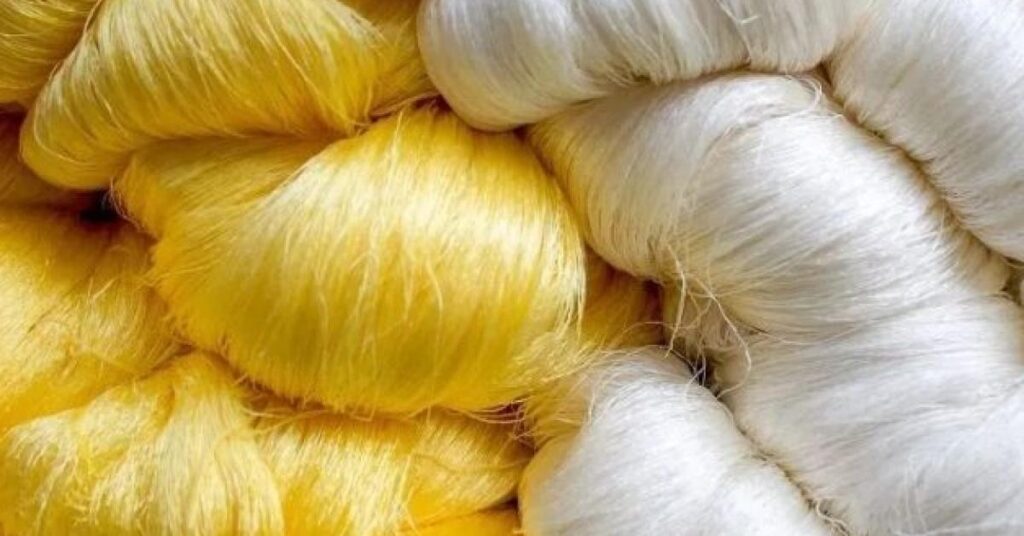Are you curious to know what is man made fibre? You have come to the right place as I am going to tell you everything about man made fibre in a very simple explanation. Without further discussion let’s begin to know what is man made fibre?
In the expansive world of textiles, the term “man-made fibers” holds a significant place. These fibers, also known as synthetic or artificial fibers, are engineered materials created through a combination of science and technology. They have revolutionized the textile industry, offering a wide range of benefits and applications. In this blog, we will delve into the meaning and characteristics of man-made fibers, their various types, and their impact on the fabric of modern life.
What Is Man Made Fibre?
Man-made fibers, as the name suggests, are not obtained from natural sources like cotton, wool, or silk. Instead, they are produced through chemical processes in laboratories and factories. These fibers are designed to possess specific properties and characteristics that make them suitable for a wide range of applications, including clothing, technical textiles, and industrial uses.
Key Characteristics Of Man-Made Fibres
- Versatility: Man-made fibers can be engineered to have various properties, including strength, durability, resistance to moisture, and more. This versatility makes them suitable for different applications.
- Consistency: Unlike natural fibers, man-made fibers can be manufactured with a high degree of consistency in terms of quality, strength, and length.
- Customizability: Manufacturers can tailor the properties of man-made fibers, such as color, texture, and thickness, to meet specific requirements.
- Sustainability: Some man-made fibers can be produced using eco-friendly processes and recycled materials, contributing to sustainability in the textile industry.
- Cost-Effective: Man-made fibers are often more cost-effective to produce than natural fibers, making them a budget-friendly choice for various products.
Types Of Man-Made Fibres
- Polyester: Polyester fibers are known for their strength, durability, and resistance to wrinkles and moisture. They are commonly used in clothing, home textiles, and technical applications.
- Nylon: Nylon is known for its exceptional strength and elasticity. It is used in various applications, including hosiery, athletic wear, and industrial uses.
- Acrylic: Acrylic fibers mimic the softness and warmth of wool. They are often used in knitwear, blankets, and upholstery.
- Spandex (Lycra): Spandex is known for its high elasticity and ability to stretch significantly. It is used in sportswear, swimwear, and undergarments.
- Rayon: Rayon, sometimes called “artificial silk,” is a semi-synthetic fiber known for its softness and drapability. It is used in clothing, upholstery, and more.
- Polypropylene: Polypropylene fibers are resistant to moisture and stains, making them suitable for applications like carpets and geotextiles.
- Carbon Fibers: Carbon fibers are incredibly strong and lightweight. They are used in aerospace, automotive, and sporting goods industries.
Impact On Modern Life
Man-made fibers have transformed the textile industry and our daily lives in various ways:
- Wider Clothing Choices: Man-made fibers have expanded the range of clothing options available to consumers, providing affordable and versatile materials for everyday wear.
- Technical Textiles: They play a crucial role in technical textiles used in industries like healthcare, automotive, and construction.
- Sustainability: Advances in man-made fibers have led to more sustainable options, reducing the environmental impact of the textile industry.
- Innovation: Continuous research and development in man-made fibers result in new materials and applications, from smart textiles to high-performance materials.
Conclusion
Man-made fibers have become an integral part of our modern lives, contributing to the development of textiles that are durable, versatile, and sustainable. Their ability to be customized and engineered to meet specific requirements has opened doors to innovative and practical applications across various industries. As technology and research continue to advance, we can expect man-made fibers to play an even greater role in shaping the fabric of the future.
FAQ
What Are Man Made Fibres?
Synthetic fibres are made of polymers that do not occur naturally but instead are produced entirely in the chemical plant or laboratory, almost always from by-products of petroleum or natural gas.
What Is Man Made Or Natural Fiber?
Ten examples of each man-made things and natural things are as follows: Man-made Things – Cars, bridges, houses, hospitals, furniture, clothes, books, cycles, smartphones, and airplanes. Natural Things – Water, clouds, rain, soil, sky, flowers, trees, animals, stars, and mountains.
What Are 4 Examples Of Man Made Fibres?
Human-made materials are those that have been created by humans. Rubber, paper, plastic, furniture, and clothing are some examples.
What Is The First Man-Made Fibre?
The first man-made fibre is Nylon. Nylon is a well-known synthetic polymer (derived from the Greek words ‘poly’ meaning ‘many’ and ‘meros’ meaning ‘parts’). It was invented by Wallace Carothers and first brought to the public’s attention in October 1938.
I Have Covered All The Following Queries And Topics In The Above Article
What Are Man-Made Fibres Give Examples
What Is Man Made Fibre Example
Man-Made Fibres Name
Man-Made Fibres Definition
Rayon Is Man-Made Fibre
Natural And Man-Made Fibres
Uses Of Man-Made Fibres
What Is Man Made Fibre
What are man-made Fibres


